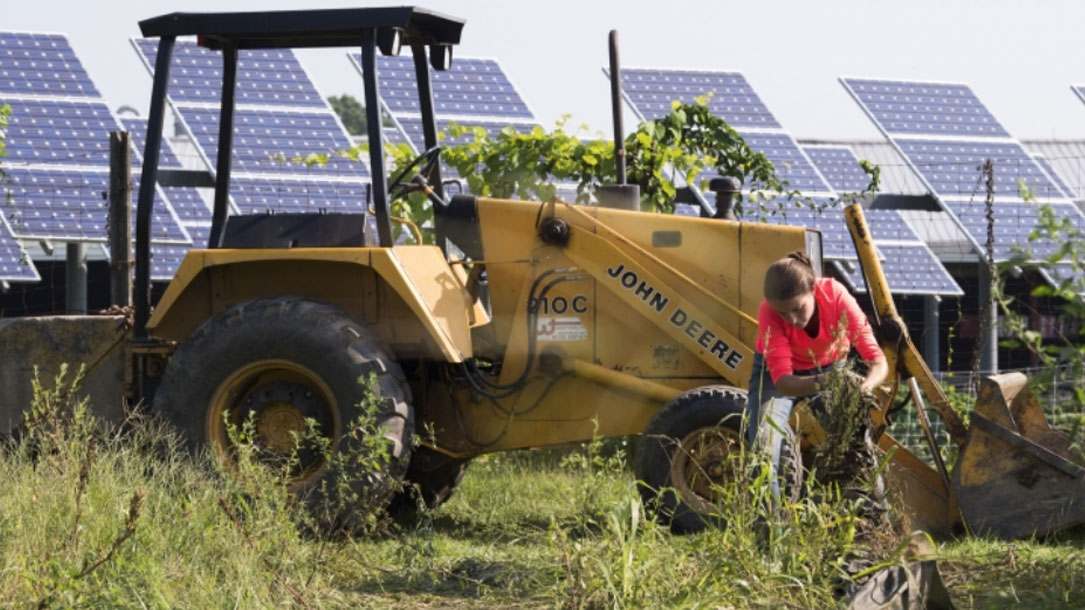Home > Climate News >

Opinion: Climate change is a local issue
“It seems clear that many residents of Taos understand and are experiencing signs of different climate evolving here and wish our government to acknowledge that we need to alter our planning for this future. Fortunately for Taos, we have had in place for many years a mechanism for landowners to preserve this kind of land—Taos Land Trust.
But the town and county need to acknowledge and put into place official protections for arable land. And, of course, aside from forever destroying arable, acequia-watered land, an entity like Family Dollar only chips away at the unique beauty of the authentic New Mexican village like El Prado…”

Answers in the trees
Columbia Land Trust (in Washington State) has been weaving climate change into its publications and outreach. Here’s an example:
“There are two ways to restore some semblance of balance to the carbon cycle: reduce emissions from fossil fuel use and increase the carbon-absorbing power of forests and other plant-rich landscapes.
Both methods are needed. We call the latter approach a ‘natural climate solution.’
Forests, especially the verdant, fast-growing forests of western Oregon and Washington, already provide a number of benefits even before taking carbon storage into account, including wood products, forestry jobs, world-class recreation, wildlife habitat, and clean air and water. ‘People manage forests for multiple purposes,’ says Lydia Mendoza, conservation lead with Columbia Land Trust. ‘Carbon sequestration is one of many crucial values that forests can provide.’ Leveraging the carbon-sequestering power of forests involves balancing values and evolving as we learn…’

Sustainability and climate change initiatives
In their most recent climate initiative, the Kennebec Land Trust Finance Committee worked with Kennebec Savings Bank Investment and Trust Services to move their investments into a Socially Responsible Investment (SRI) portfolio that is aligned with their mission. SRI considers environmental, social, and corporate governance criteria to generate long-term competitive financial returns and positive societal impact.
As managers of forestland, they use and promote forest management practices that maximize carbon sequestration, including: protecting soil carbon, where about 50% of the carbon inventory is typically stored on a forested acre; promoting native species and increasing plant diversity to improve forest resiliency and carbon storage; harvesting sustainably; and taking a long-term view by growing high-value and larger diameter trees. On the ground, their forestry days at the Curtis Homestead are teaching the next generations…

Warming climate is changing where birds breed: Study
[Clark] Rushing explained, “There’s a real risk that, if these declines continue at their current pace, many species could face extinction within this century. Neotropical migrants are vulnerable to future climate change, putting them at risk of greater declines.”
Neotropical migrants already fly thousands of miles each year to breed, so why can’t they go just a bit farther as the climate warms?

Forest carbon: An essential natural solution for climate change
Climate change can seem like an overwhelming challenge, and it can be difficult to find meaningful ways to make a difference…
Many landowners have begun to ask how their forest management strategy affects the carbon within their forest and thus the forest’s ability to mitigate climate change. Every strategy has its tradeoffs; therefore, to meet all of society’s needs, we will ultimately need a mix of passive and active strategies across the region. What role will your forest play?
To learn more, download the “Forest Carbon: An essential natural solution to climate change” PDF (5 MB) or request a free copy by e-mailing Paul Catanzaro…

About the Solar Energy Technologies Office
The U.S. Department of Energy (DOE) Solar Energy Technologies Office (SETO) supports early-stage research and development in three technology areas: photovoltaics (PV), concentrating solar power (CSP), and systems integration with the goal of improving the affordability, performance, and value of solar technologies on the grid…

Farmer’s Guide to Going Solar
A growing number of farms and agricultural businesses are looking to solar to power their daily operations. Thanks in part to the Solar Energy Technologies Office’s investments, the cost of going solar has declined, enabling more installations across the country. Consider these questions to help [farmers] determine what’s best …

Wildlife collapse from climate change is predicted to hit suddenly and sooner
“It’s not that it happens in some places,” said Cory Merow, an ecologist at the University of Connecticut and one of the study’s authors. “No matter how you slice the analysis, it always seems to happen.”
If greenhouse gas emissions remain on current trajectories, the research showed that abrupt collapses in tropical oceans could begin in the next decade [emphasis added]. Coral bleaching events over the last several years suggest that these losses have already started, the scientists said. Collapse in tropical forests, home to some of the most diverse ecosystems on Earth, could follow by the 2040s…

Wind energy & wildlife: Site it right
Site Wind Right is The Nature Conservancy’s approach to promoting smart, renewable wind energy in the right places—areas that are low impact for conservation, including already developed lands. The strategy has several components:
- Promoting policies and incentives for low-impact renewable energy deployment
- Advancing the science of low-impact siting
- Providing the wind industry and public with information to support low-impact siting
- Pursuing opportunities to work with the renewable energy sector to advance good siting practices

In rare bipartisan bill, U.S. senators tackle climate change via agriculture
U.S. senators on Thursday introduced a bipartisan bill that would direct the Agriculture Department to help farmers, ranchers, and landowners use carbon dioxide-absorbing practices to generate carbon credits, a rare collaboration on climate change.
The proposed Growing Climate Solutions Act directs the USDA to create a program that would help the agriculture sector gain access to revenue from greenhouse gas offset credit markets…












